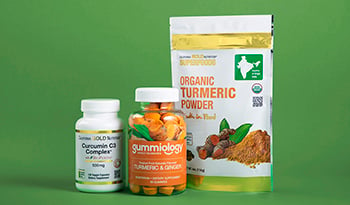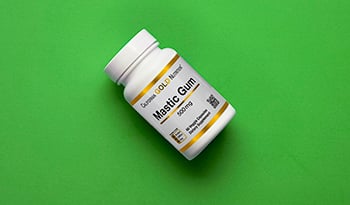The Importance of Vitamin D for Health and Well-Being

If there is one vitamin in the world that can help optimize a person’s health and well-being, it’s vitamin D (also known as vitamin D3 or cholecalciferol). Traditionally, vitamin D deficiency was associated with bone disease rickets, but since the disease is now rare, many assume vitamin D deficiencies do not exist. Nothing could be farther from the truth!
Fortunately, this very necessary vitamin can be made and absorbed into the body for free when time is spent in the sun—ultraviolet B (UV-B) light waves from the sun react with a form of cholesterol in our skin to create the vitamin D hormone. However, that may not be enough for most to achieve optimal health. Additionally, since many people worldwide spend more time indoors than outdoors, achieving adequate blood levels from the sun is difficult and most need to supplement.
Over the last decade, thousands of studies have shown health benefits when one optimizes vitamin D intake. These studies tell us that those with higher vitamin D levels in their blood have a lower risk of health complications.
Vitamin D Deficiency Is Common
In my Southern California medical practice, where we have sunny skies more than 300 days per year, four in five (80 percent) of my patients have clinical vitamin D deficiency, defined by a blood level 30 ng/ml (75 nmol/l) or lower.
This is because few people spend 15 to 20 minutes each day in sunlight, exposing their face, arms, and legs to ultraviolet light. Up to 90 percent of people around the world are deficient. Those with more melanin, responsible for darker pigmented skin, require up to 30 minutes in the sun to generate vitamin D. Those over age 65 also require more time outdoors to generate vitamin D due to changes in skin elasticity.
Vitamin D is made by sun-exposed skin only during certain times of the day. Primarily, Vitamin D production occurs if your shadow is “shorter” than you are tall, which is usually between 10 AM to 2 PM. Interestingly, this is also when solar energy panels make the most energy!
Those who apply sunscreen before going outdoors block the sun’s rays from hitting the skin and generating vitamin D. Sunscreen should be applied after 15 to 30 minutes of sunlight exposure.
What Are the Risks of Low Vitamin D Levels?
High Blood Pressure (Hypertension)
High blood pressure affects one in four adults. Worldwide, 1 billion people have high blood pressure, a leading risk factor for heart attacks, congestive heart failure, and strokes. While a person develops high blood pressure for many reasons, studies show that men with lower vitamin D levels are six times more likely to have hypertension, while women are almost three times more likely. Maintaining a healthy weight, consuming a diet high in fruits and vegetables, and doing routine exercise helps control blood pressure, too.
So, what can vitamin D do? Scientific studies show vitamin D helps relax the blood vessels, which carry blood throughout our body, resulting in lower blood pressure. Vitamin D deficiency also likely accounts for a major reason those with increased skin pigmentation are at higher risk for high blood pressure.
Heart Attacks
Heart disease is a leading killer in the United States, Europe, and Asia. In the United States, it accounts for almost 1 million deaths yearly. A Harvard University study showed that people with higher levels of vitamin D in their blood had 80 percent less risk of heart attacks when compared to those with the lowest blood levels.
A study from Germany showed those with lower vitamin D blood levels were five times more likely to die from sudden cardiac death when compared to those with higher vitamin D blood levels. Many other studies have shown similar results.
A 2017 study concluded, “… the levels of blood vitamin D were significantly lower in heart attack patients, especially in America and Asia, and sufficient blood vitamin D levels might protect against the occurrence of heart attacks.”
Other Conditions Associated with Vitamin D Deficiency
Numerous other studies show those with lower vitamin D levels were correlated with higher rates of the following:
- dementia
- strokes
- peripheral artery disease
- fibromyalgia
- falls
- fractures
- multiple sclerosis
- lupus
- rheumatoid arthritis
- asthma
- autism
- psoriasis
The importance of vitamin D is obvious, and supplementation is crucial to your health.
What About Vitamin D Toxicity?
Those who take over 10,000 IU of vitamin D daily for a prolonged period of time may absorb too much calcium resulting in elevated blood calcium levels and increased kidney stones. Those with chronic kidney disease, high blood calcium levels, and lymphoma must consult their physicians before starting vitamin D supplementation.
Know your Vitamin D Levels
Ask your doctor to check your vitamin D blood level. She will need to order a vitamin D 25-OH blood test. Most labs report normal results being 30 ng/ml (75 nmol/l) to 100 ng/ml (250mmol/l). An optimal vitamin D blood level should be 50 ng/ml to 100 ng/ml (125 nmol/l to 250 nmol/l).
Supplementing with Vitamin D
Most deficient adults will need to take a daily dose of Vitamin D (cholecalciferol) ranging from 2,000-5,000 IU of Vitamin D. Some may need more. Pregnant women and breastfeeding mothers should also consider supplementing with vitamin D at 5,000 IU daily. Vitamin D can be taken by most healthy children from 1 to 18 years of age. The usual dose is between 1,000-2,000 IU daily.
Supplementation with vitamin D is crucial year-round. However, it is even more critical when sunlight is minimal. Some doctors may recommend a vitamin D2 (ergocalciferol) prescription for 50,000 IU once weekly. Based on the research, Vitamin D3 is clinically more effective and the preferred supplement.
You can also increase your vitamin D levels by spending 15 minutes in the sun each day without sunscreen, exposing your arms, face, and legs. Routine physical activity outdoors has a lot of health benefits.
Preventing chronic disease is the key to longevity and quality of life. Daily vitamin D supplementation is the one vitamin that can help us achieve this goal.
Disclaimer:
The above information is for educational purposes only. Always consult with your own personal physician or qualified healthcare professional regarding health matters you may have. The products and claims made about specific products on or through this site have not been evaluated by the United States Food and Drug Administration. They are not approved to diagnose, treat, cure, or prevent disease. Read more about iherb.com’s disclaimer.
References:
- Vitamin D Prescription by Eric Madrid MD, Published 2009
- Lin S-W, Wheeler DC, Park Y, et al. Prospective study of ultraviolet radiation exposure and risk of cancer in the U.S. International Journal of Cancer Journal International du Cancer. 2012;131(6):E1015-E1023. doi:10.1002/ijc.27619.
- Chen S, Sun Y, Agrawal DK. Vitamin D Deficiency and Essential Hypertension. Journal of the American Society of Hypertension : JASH. 2015;9(11):885-901. doi:10.1016/j.jash.2015.08.009.
- Rostand, Stephen G., Vitamin D, Blood Pressure, and African Americans: Toward a Unifying Hypothesis Clin J Am Soc Nephrol 5: 1697–1703, 2010. doi: 10.2215/CJN.02960410
- O'Brien KM1, Sandler DP2, Taylor JA2, Weinberg CR1. Serum Vitamin D and Risk of Breast Cancer within Five Years. Environ Health Perspect. 2017 Jul 6;125(7):077004. doi: 10.1289/EHP943.
- Palmer JR, Gerlovin H, Bethea TN, et al. Predicted 25-hydroxyvitamin D in relation to incidence of breast cancer in a large cohort of African American women. Breast Cancer Research : BCR. 2016;18:86. doi:10.1186/s13058-016-0745-x.
- Kim Y, Franke AA, Shvetsov YB, et al. Plasma 25-hydroxyvitamin D3 is associated with decreased risk of postmenopausal breast cancer in whites: a nested case–control study in the multiethnic cohort study. BMC Cancer. 2014;14:29. doi:10.1186/1471-2407-14-29.
- Circulating 25-hydroxyvitamin D Levels and Prognosis among Cancer Patients: A Systematic Review Adetunji T. Toriola, Nhi Nguyen, Kristen Scheitler-Ring and Graham A. Colditz Cancer Epidemiol Biomarkers Prev June 1 2014 (23) (6) 917-933; DOI:10.1158/1055-9965.EPI-14-0053
- Jizhen Huang,Zhiwei Wang,Zhipeng Hu,Wanli Jiang,Bowen Li , Association between blood vitamin D and myocardial infarction: A meta-analysis including observational studies, Clinica Chimica Acta August 2017
- Houghton, Lisa A. and Vieth, Reinhold. “The case against ergocalciferol (vitamin D2) as a vitamin supplement.” The American Journal of Clinical Nutrition. October 2006. Vol. 84 no. 4. 694-697. Web. http://ajcn.nutrition.org/content/84/4/694.full
DISCLAIMER:This Wellness Hub does not intend to provide diagnosis...













































































 Table of Contents
Table of Contents
















